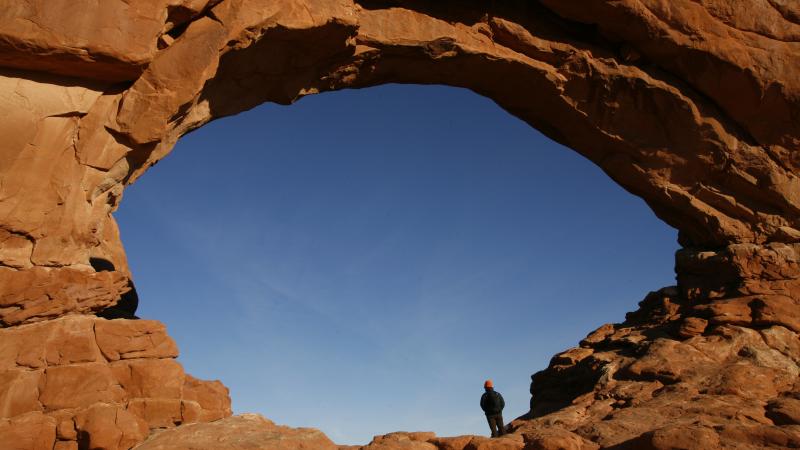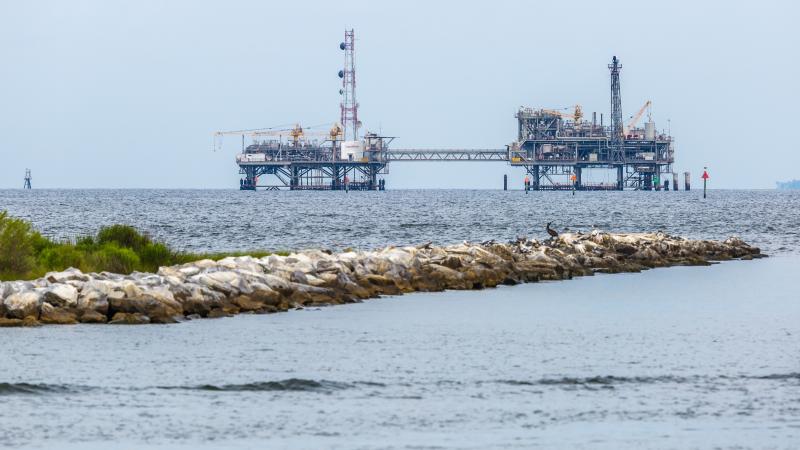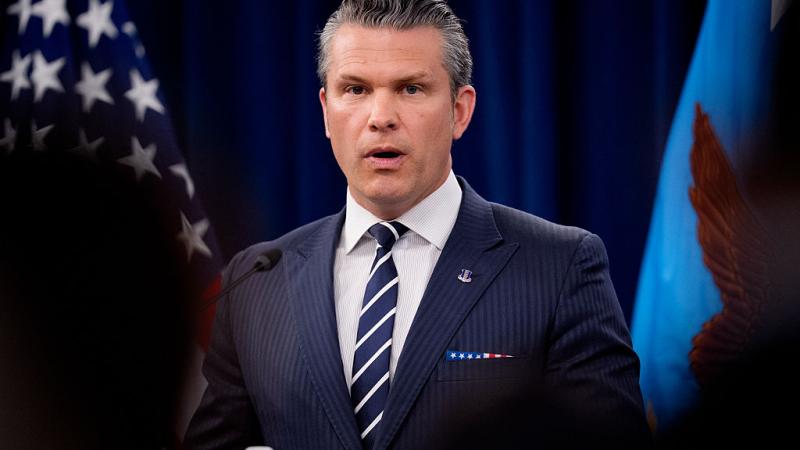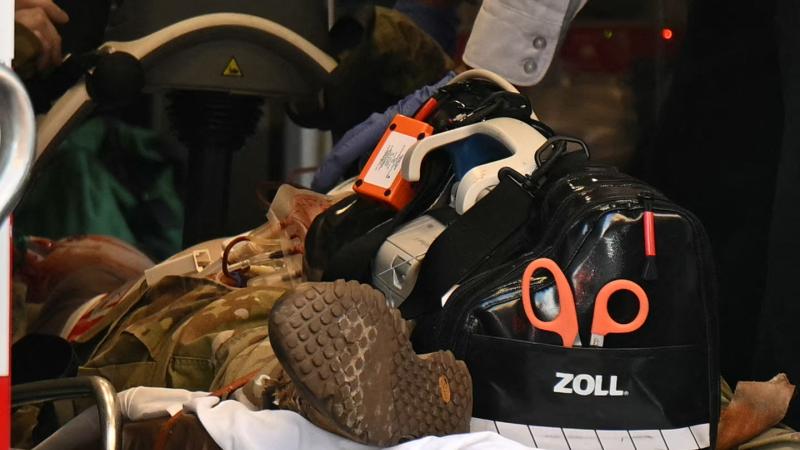Wyoming rare earth mine touted as America’s first in decades isn’t economically viable, critics say
Ramaco Resources says its Brook Mine near Sheridan, Wyoming, will satisfy a large chunk of U.S. demand for rare earths, but experts say the mine's potential falls well beneath the hype and won’t likely ever turn a profit — much less produce any minerals.
Energy Secretary Chris Wright last week traveled to a spot in north-central Wyoming for a ribbon-cutting event at what is being billed as America’s first new rare earth mine in 70 years.
Ramaco Resources claims its Brook Mine near Sheridan, Wyoming, will satisfy a large chunk of U.S. demand for rare earths and their applications by extracting the resources from clay deposits found between layers of coal.
The hope that the U.S. could develop its own rare earth sources and break China’s control over those supply chains has stirred a lot of excitement. At the ribbon-cutting ceremony last week, Wright was flanked by Wyoming’s congressional delegation, Gov. Mark Gordon and former West Virginia Senator Joe Manchin, who is on the board of Ramaco.
Predictions fall short of the hype, experts say
“Mining our own minerals will help safely and securely power the advanced technologies driving our economy and national defense,” Sen. John Barrasso, R-Wyo., said during the ceremony. Rare earth elements are crucial — or even strategic — components in a wide range of technologies, including electronics, renewable energy, and defense systems.
Beneath the cheers for Ramaco, however, some mining experts with experience with the minerals that Ramaco is aiming to extract, say the Brook Mine’s potential falls well beneath the hype and won’t likely ever turn a profit, much less produce any minerals.
“This thing has moved to the number one slot of mining frauds in North America,” David Hammond, a mineral economist with decades of experience as a mining consultant, told Just the News.
With the Trump administration looking to invest U.S. taxpayers' money in the development of domestic rare earth supplies, critics are hoping the feds will take a close look at what Ramaco is trying to sell.
Ramaco didn’t respond to requests for comment from Just the News about the claims of its critics, or the January 2024 press releases issued by law firms announcing their own investigations into Ramaco concerning possible violations of federal securities laws. At presstime, Just the News was unable to determine whether any suits had actually been filed.
A war without missiles and bullets
President Trump has long recognized the need to break China’s control over critical mineral supply chains. It’s a goal that’s easier said than done, but experts say it’s vitally important to national security.
At a recent House Foreign Affairs Sub-Committee hearing, Frank Fannon, managing director of Fannon Global Advisors, called China’s control of these supply chains a “quiet war against the United States.”
“This is not a war fought with missiles and bullets, but one waged with minerals and refineries. The Chinese Communist Party has systematically weaponized its control over critical mineral supply chains as part of a broader strategy to displace the United States as the world's indispensable power,” Fannon said.
When it comes to mining, China has a competitive advantage over the U.S. due to its lax labor and environmental regulations, which allow it to build mines far faster than is possible in the U.S. at the cost of serious environmental and worker safety problems. The government of China subsidizes its mining operations, allowing it to produce minerals and components more cheaply than the U.S. It’s also been known to flood the market to drive down prices, push away consumers and maintain a stranglehold on the market.
Earlier this month, the Department of Defense agreed to become the largest shareholder in MP Materials, which operates the only rare-earth mine in the U.S., at Mountain Pass in California. The Pentagon, according to Doomberg, is investing the capital that MP Materials needs to construct domestic processing plants and magnetic facilities, while also guaranteeing a floor price for the company’s products, which would shield it from market manipulation or other factors that could make the project economically nonviable.
Randall Atkins, Ramaco CEO, told Forbes earlier this week that he isn’t seeking direct investment from the federal government to expand his Brook Mine operation, but he is hoping for pricing support and a stockpile similar to the Strategic Petroleum Reserve.
Ramaco releases a summary economic assessment
Besides the concern for investors, critics of Ramaco are also concerned about the potential waste of taxpayer funds on a project they say isn’t economically viable.
Ramaco released a summary of a preliminary economic assessment (PEA) of the mine earlier this month. The PEA was performed by Fluor Corporation, but the summary was Ramaco’s presentation of that report.
Hammond, the mineral economist, explained that a PEA goes into detail about what they’re doing and how they are doing it. That includes details on capital investment, details on how the material mined will be processed, and how they’ll get that material into a salable product. It’s not a feasibility study, he explained.
Hammond said the summary is not any of those things, and it’s full of “big holes.” He said it’s basically a “back of the envelope” estimation with no analysis on how the processing of the mined material will be done. There’s nothing in the summary about the chemistry of the process.
“It's basically what a third-year mining student would be able to do,” Hammond said.
‘It’s not going to work,’ another expert argues
Hammond isn’t the only critic examining the report. Tim Worstall, another expert in rare earths, especially scandium, has been expressing skepticism about the mine for a long while, sometimes with rather sharp language.
After the summary PEA was released, Worstall wrote on his It’s all obvious or trivial except… Substack that “This is worse than I thought it would be. It’s not going to work.”
Worstall explains that there are rare earths in the clay surrounding the coal seams at the Brook Mine, and it is possible to extract them. However, “You can extract anything at a price. That’s not enough for a profitable mining operation, obviously.”
Worstall said the prices that the summary estimates for the minerals it would extract are far higher than the market prices. Gallium, for example, is sold at about half the price listed in the summary, and the other minerals likewise have inflated prices.
According to the summary, Ramaco expects half of its revenues to come from scandium. Without it, the mine would lose $79 million a year, Worstall estimates. Therefore, this is primarily a scandium mine, he says, which happens to be his primary area of expertise.
The mine will produce 71.65 tons per year at a price of $3,750 per kilogram, according to the summary. Worstall argues that this isn’t anywhere close to the market price. He said a large Chinese plant quoted him $540 per kilogram.
Producing more than the market will bear
The volume that the mine expects to produce also far exceeds demand, Worstall and Hammond say.
Worstall writes that the world’s largest user of scandium oxide is Bloom Energy, and their annual demand is under 5.5 tons, according to customs records of their imports. The U.S. Geological Survey (USGS) estimates global consumption at 40 tons, which Worstall questions.
Even if the USGS estimate is accurate, Worstall explained, it’s considerably below the estimated 71.65 tons the summary report claims will come out of the mine every year. Worstall allows for the possibility he could be wrong, as experts sometimes are. Some big new use for scandium could arise. That is, Worstall wrote, quite unlikely, though.
Scandium is used to make aluminum stronger, and aluminum is a lightweight metal. The alloy is used in spacecraft. It’s also been explored as possibly useful in commercial aviation developments. Hammond said that decreasing the weight of aircraft would be an obvious advantage for a company, such as Boeing. However, even if Boeing started using large amounts of scandium to produce stronger aluminum for its aircraft, it wouldn’t make the Brook Mine economically viable.
“If Boeing wanted 200,000 tons a year of scandium, are they going to pay $3,750 for it?” Hammond asked rhetorically.
He said other pricing and production volumes in the report are also questionable. Ramaco is proposing to produce half the current world’s demand for gallium, which is used in semiconductors and light-emitting diodes, both critical to consumer and military applications. The market has the potential to grow, Hammond said, but not by the orders of magnitude Ramaco claims.
“Its uses are many, but they involve literally grams, not tons, of gallium,” he said.
Worstall explained on his Substack that Ramaco is claiming it will sell many times over the entire world’s consumption of the minerals it will extract — as much as three to five times the demand — for three to five times current market prices.
“That’s not how the world works,” Worstall wrote.
Mining methods and costs remain uncertain
In December 2023, Wolfpack Research released a scathing report, “Pumping and Dumping Nearly Worthless Dirt,” which estimates Ramaco would lose $88 billion if the company was able to extract, process and sell $37 billion in rare earth elements. Wolfpack Research, founded by Dan David, describes itself as a “short-biased activist research firm.”
While Ramaco claims to have a rare earth hotspot, the Wolfpack report states that the concentrations of the minerals in the clay being mined are very low. Rare earths aren’t actually rare, and concentrations in the Earth’s crust average 150 to 220 parts per million. The concentrations at the Brook Mine are about 500 parts per million, according to the summary report. Compare that to the Bear Lodge deposit in northeast Wyoming, a short distance from the Brook Mine, where the concentrations are as high as 30,700 parts per million.
The Wolfpack report disputes claims by Ramaco that the costs of extraction will be low because the soft clays at the Brook Mine are cheaper to mine than hard rock.
“An expert we spoke with said that even if METC [Ramaco Resources' NASDAQ ticker symbol] could magically levitate REEs [rare earth elements] out of the ground by waving a wand, the Brook Mine would still be unprofitable,” the Wolfpack report says.
Hammond said he’s gone through the PEA report multiple times and cannot determine what Ramaco is estimating the mining costs are per ton. The numbers provided, he said, don’t really make that clear.
“If we knew the projected per ton number, we could then understand if it is a surface or underground mine, but they are likely hiding it as they have not figured out any realistic mining method yet,” Hammond speculates.
Expert: "Politicians don't want to know"
Hammond said the exaggerations of the mining potential at Ramaco are not unique to that company or that project. He and other experts in mining and mineral economics, he said, have been trying to get politicians and officials in the federal government to consider their pitches on these prospective rare earth operations with little success.
“It's like nobody knows what we're talking about in these agencies. Politicians don't want to know, because all they want is publicity and to show that they're doing something. And when the investment that a government would make in it fails, they're long gone. They're out of office,” Hammond said.
With the tactics China uses to maintain its near-monopoly over rare earth supply chains, it’s unlikely free markets will address the national security problems for the free world that arise out of China's dominance. The U.S. government will likely have to subsidize the development of domestic supply chains. The stewards of taxpayer dollars will have to scrutinize investments as if they were risking their own money.
The Facts Inside Our Reporter's Notebook
Links
- Ramaco Resources
- a large chunk of U.S. demand
- said during the ceremony
- David Hammond
- President Donald Trump has long recognized
- House Foreign Affairs Committee
- Frank Fannon
- faster than is possible in the U.S.
- environmental problems
- known to flood the market
- agreed to become the largest shareholder in MP Materials
- according to Doomberg
- told Forbes
- similar to the Strategic Petroleum Reserve
- preliminary economic assessment
- an expert in rare earths
- mine for a long while
- with rather sharp language
- Itâs all obvious or trivial exceptâ¦
- Bloom Energy
- explored as a possible use in commercial aviation
- Pumping and Dumping Nearly Worthless Dirt
- Dan David
- describes itself
- Rare earths arenât actually rare
- average 150 to 220 parts per million
- Bear Lodge deposit
- initiating an investigation













